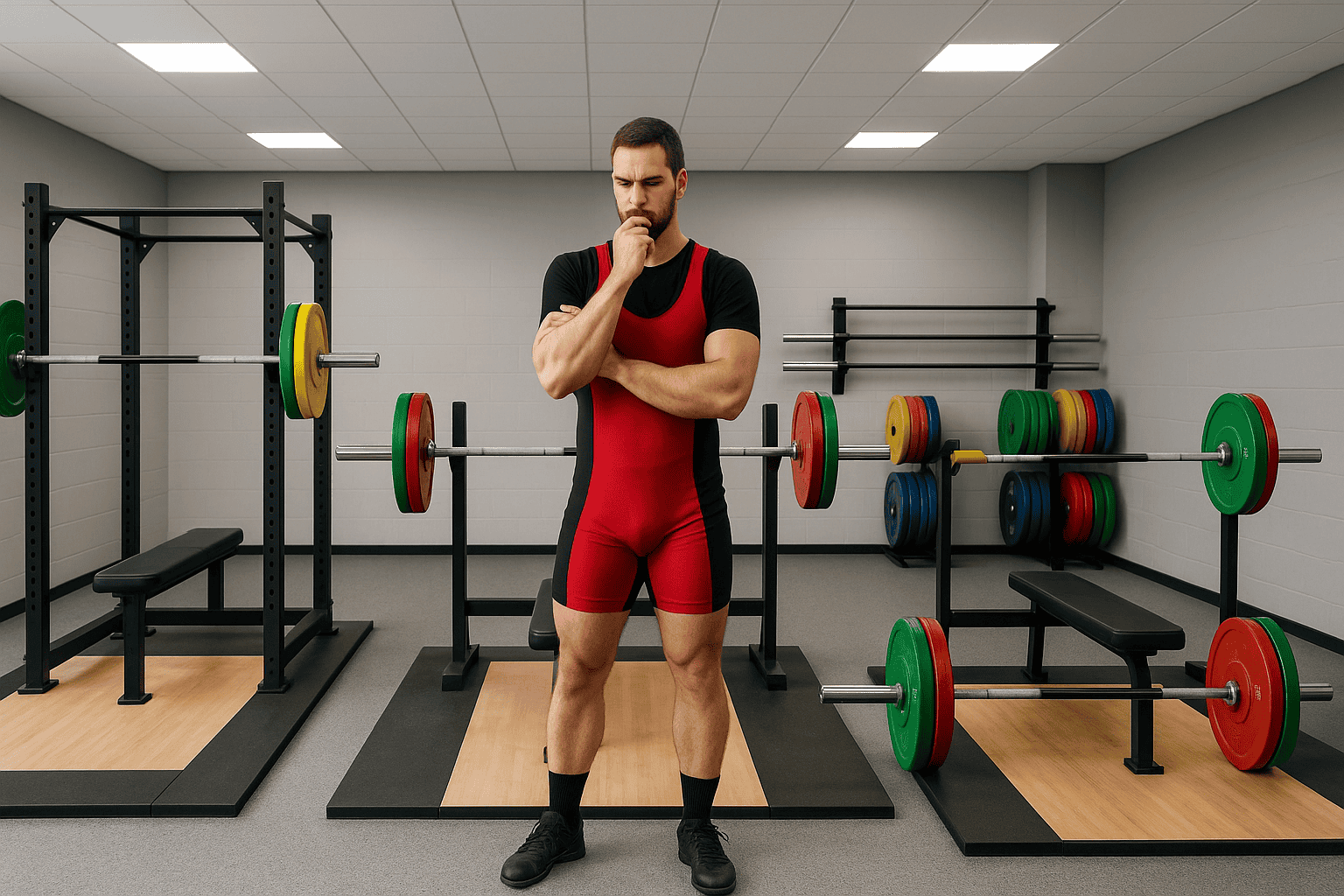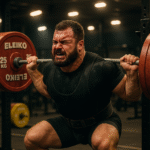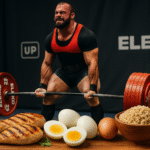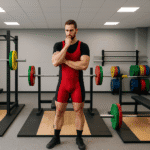Powerlifting is a strength sport that focuses on three fundamental movements: the squat, bench press, and deadlift. Unlike bodybuilding, which emphasizes muscle size and aesthetics, powerlifting is about moving the maximum amount of weight possible in these three lifts. This comprehensive guide will help you understand the basics and start your powerlifting journey safely and effectively.
What is Powerlifting?
Powerlifting is a competitive strength sport where athletes attempt to lift the heaviest weight possible in three disciplines. The total weight lifted across all three movements determines the winner in competition. However, you don’t need to compete to benefit from powerlifting training – many people use these fundamental movements to build strength, confidence, and overall fitness.
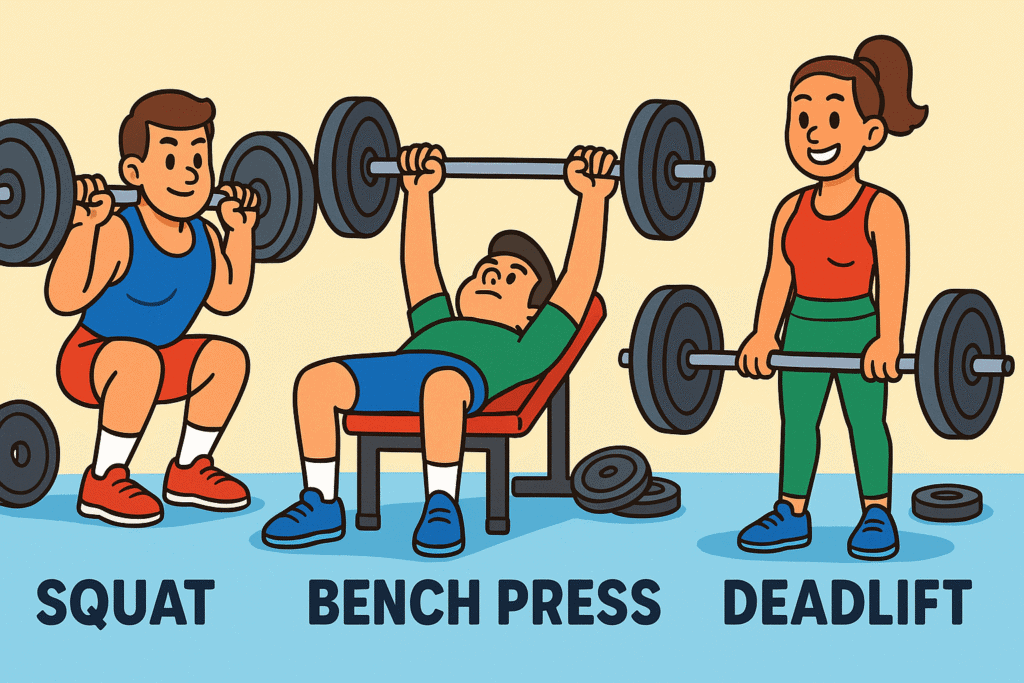
The Three Powerlifts Explained
The Squat
The squat is often called the “king of exercises” because it engages multiple muscle groups simultaneously. You’ll place a loaded barbell across your upper back and squat down until your hip crease drops below your knee cap, then stand back up.
Primary muscles worked: Quadriceps, glutes, hamstrings, core, and upper back
Key form points:
- Keep your chest up and core braced
- Knees track over your toes
- Descend until hip crease is below knee cap
- Drive through your heels to stand up
The Bench Press
The bench press develops upper body pressing strength. You’ll lie on a bench and press a loaded barbell from your chest to full arm extension.
Primary muscles worked: Chest, shoulders, triceps, and core
Key form points:
- Maintain a slight arch in your back
- Keep your feet planted on the floor
- Lower the bar to touch your chest lightly
- Press straight up with control
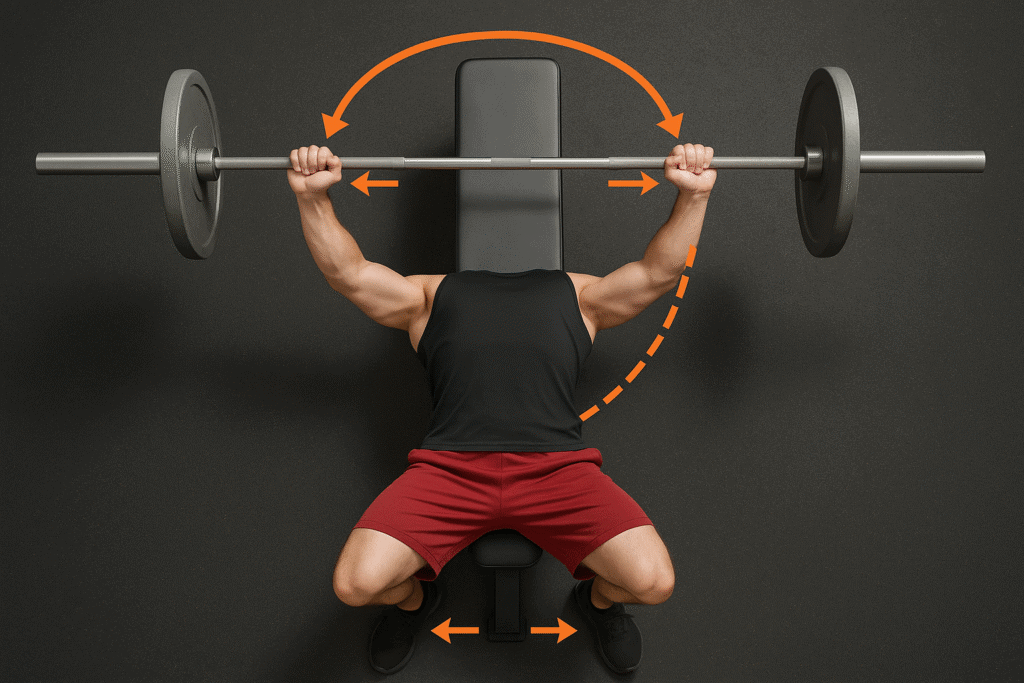
The Deadlift
The deadlift involves lifting a loaded barbell from the floor to hip level. It’s considered one of the most functional movements as it mimics picking up heavy objects from the ground.
Primary muscles worked: Hamstrings, glutes, lower back, upper back, traps, and forearms
Key form points:
- Start with the bar over mid-foot
- Keep your back straight and chest up
- Engage your lats to keep the bar close
- Drive through your heels and extend your hips
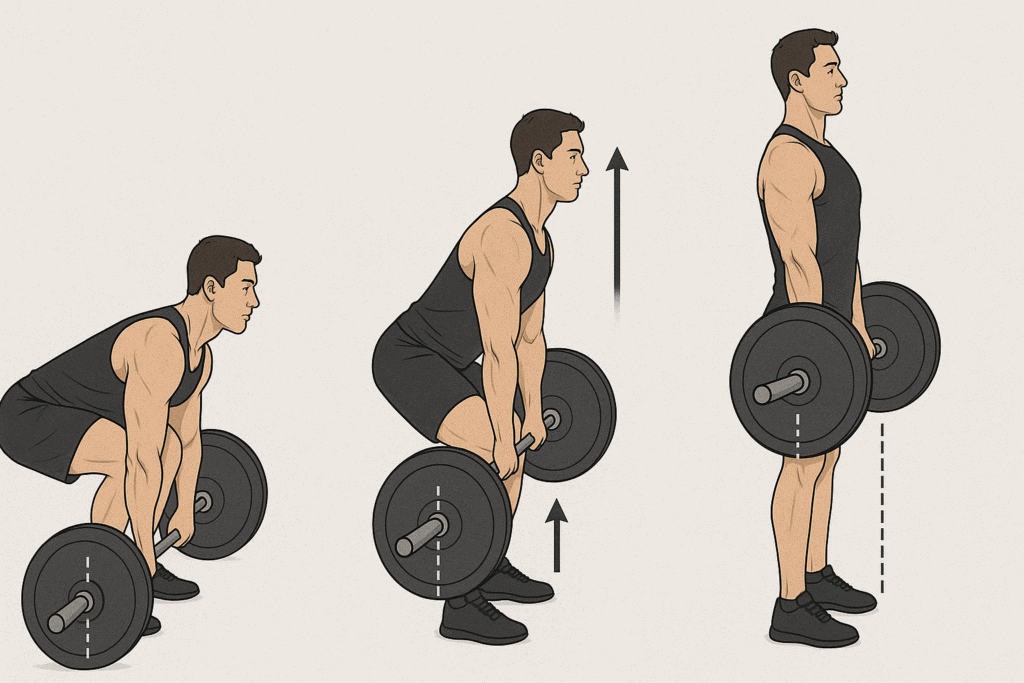
Getting Started: Your First Steps
1. Learn Proper Form First
Before adding weight, master the movement patterns. Start with just a barbell (typically 45 pounds) or even a broomstick to practice the motions. Consider working with a qualified powerlifting coach or experienced lifter who can provide feedback on your technique.
2. Essential Equipment
While you don’t need much to start, certain equipment will enhance your training:
- Flat-soled shoes or bare feet for better stability
- Lifting belt for heavy squats and deadlifts (once you’re lifting intermediate weights)
- Wrist wraps for bench press support
- Knee sleeves for warmth and joint support during squats
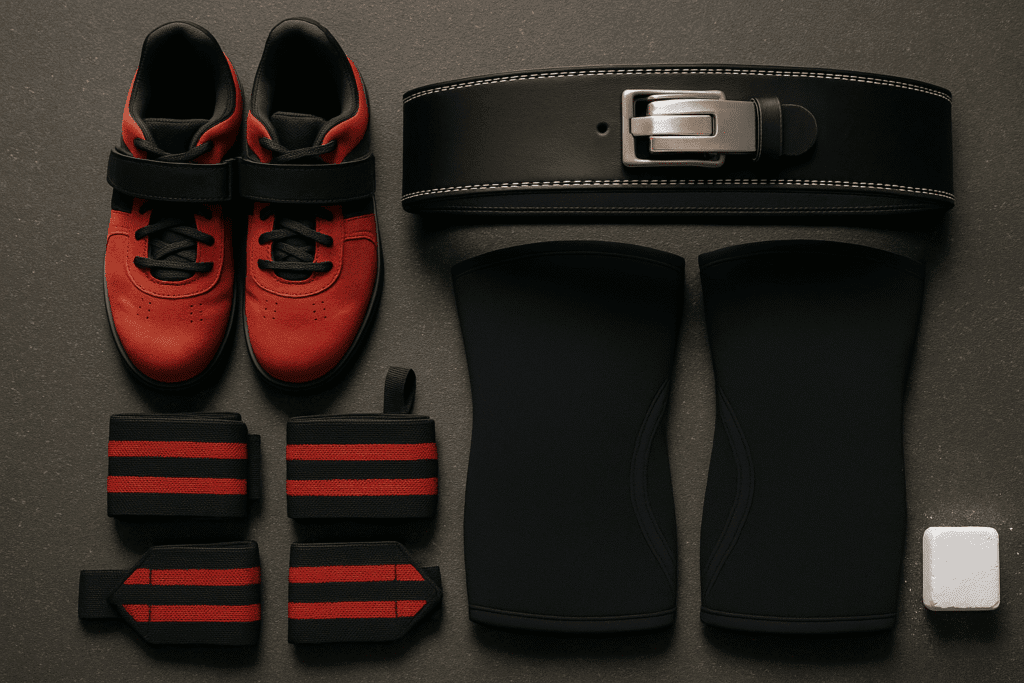
3. Start with a Beginner Program
A structured program ensures progressive overload and balanced development. Popular beginner programs include:
- Starting Strength by Mark Rippetoe
- StrongLifts 5×5 by Mehdi Hadim
- 5/3/1 for Beginners by Jim Wendler
These programs typically have you training 3 days per week, focusing on the main lifts with some accessory work.
Programming Basics
Understanding Sets and Reps
- High reps (8-15): Build muscle endurance and size
- Medium reps (4-8): Develop strength and size
- Low reps (1-3): Build maximum strength and power
Beginners should focus on medium rep ranges (5-8 reps) to build a strength base while practicing proper form.
Progressive Overload
The key to getting stronger is gradually increasing the weight, reps, or sets over time. Start conservatively – you should be able to complete all prescribed reps with good form while leaving 1-2 reps “in the tank.”
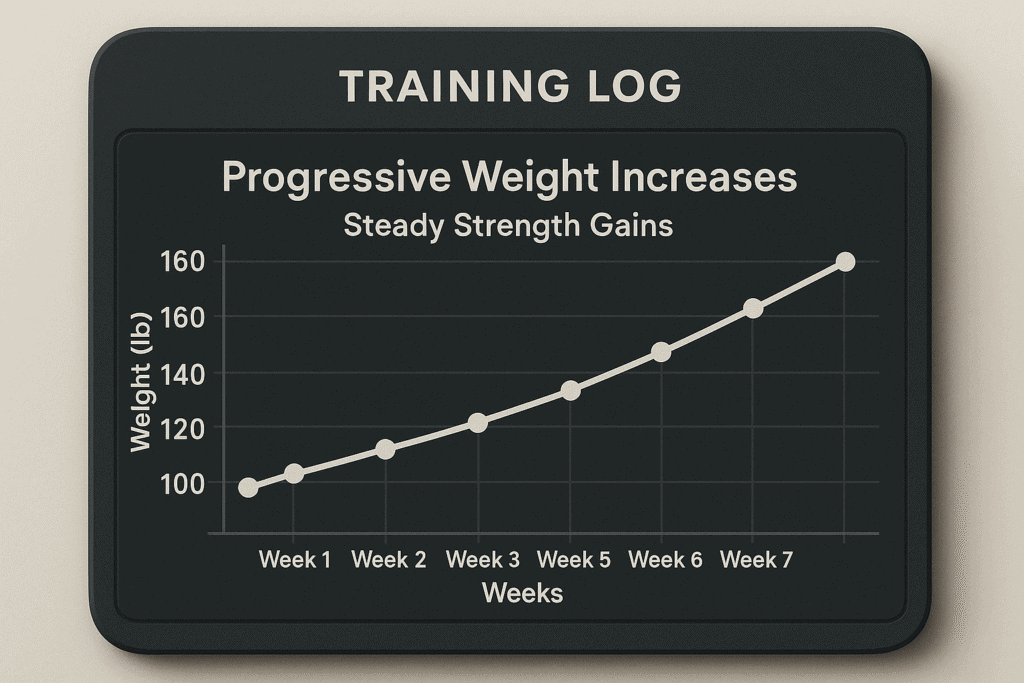
Nutrition for Powerlifting
Proper nutrition fuels your training and recovery. Focus on:
- Adequate protein: 0.8-1.2 grams per pound of body weight daily
- Sufficient calories: Don’t severely restrict calories while trying to build strength
- Hydration: Drink plenty of water before, during, and after training
- Pre-workout fuel: Eat a balanced meal 2-3 hours before training

Recovery and Rest
Recovery is when your body adapts and gets stronger. Prioritize:
- Sleep: Aim for 7-9 hours of quality sleep nightly
- Rest days: Take at least one full day off between training sessions
- Active recovery: Light walking, stretching, or yoga on off days
- Stress management: High stress can impair recovery and performance
Safety First
Powerlifting, when done correctly, is relatively safe. However, always prioritize safety:
- Warm up properly with dynamic movements and light weights
- Use spotters when benching or attempting new max weights
- Listen to your body – pain is different from muscle fatigue
- Don’t ego lift – leave your ego at the door and focus on proper form
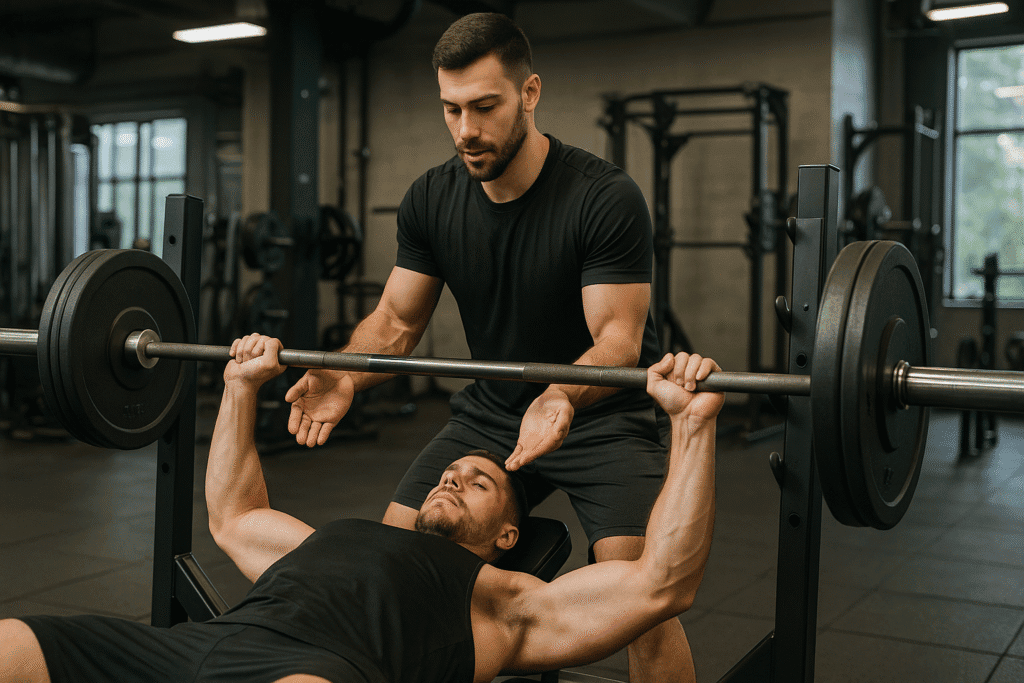
Common Beginner Mistakes to Avoid
- Adding weight too quickly: Patience builds long-term strength
- Neglecting warm-up: Always prepare your body for heavy lifting
- Ignoring accessory work: Supporting muscles need attention too
- Comparing yourself to others: Focus on your own progress
- Skipping rest days: Recovery is when you actually get stronger
When to Consider Competing
While competition isn’t necessary, it can be motivating and fun. Consider competing when you:
- Have at least 6-12 months of consistent training
- Can perform all three lifts with good form
- Want to challenge yourself in a supportive environment
- Are curious about testing your strength against others

Building Your Powerlifting Community
Powerlifting has an incredibly supportive community. Connect with others by:
- Joining a powerlifting gym if available in your area
- Following reputable coaches and athletes on social media
- Participating in online forums and communities
- Attending local competitions as a spectator first
Conclusion
Powerlifting offers a straightforward path to building strength, confidence, and discipline. Start with proper form, follow a structured program, and be patient with your progress. Remember that everyone starts somewhere – even world record holders were once beginners learning the basics.
The journey of powerlifting is as rewarding as the destination. Every training session is an opportunity to become stronger than you were the day before. Focus on consistency over perfection, and you’ll be amazed at what you can achieve.
FAQs
Q: How often should I train as a beginner?
A: Start with 3 days per week, allowing at least one day of rest between sessions. This gives your body adequate time to recover and adapt. As you become more experienced, you can gradually increase frequency.
Q: How much weight should I start with?
A: Begin with just the barbell (45 lbs) for most exercises, or even a lighter training bar if needed. Focus on mastering the movement pattern first. You can always add weight later – there’s no rush.
Q: Do I need to join a special powerlifting gym?
A: While powerlifting-specific gyms are ideal, any gym with a squat rack, bench press, and barbells will work for beginners. Look for a gym that allows deadlifting and has sufficient weight plates.
Q: Is powerlifting safe for beginners?
A: Yes, when done with proper form and progression. Powerlifting actually has a lower injury rate than many other sports. Always prioritize technique over heavy weight, especially when starting out.
Q: How long before I see strength gains?
A: Most beginners see noticeable strength improvements within 2-4 weeks. However, significant changes typically occur after 8-12 weeks of consistent training. Be patient and trust the process.
Q: Can women do powerlifting?
A: Absolutely! Powerlifting is excellent for women and offers the same benefits. Women often excel at powerlifting due to their typically superior technique and consistency in training.
Q: What if I can’t do a full squat to depth?
A: Work on mobility and flexibility daily. Start with bodyweight squats, use a box to squat to, or try goblet squats. Consider seeing a physical therapist if you have significant mobility restrictions.
